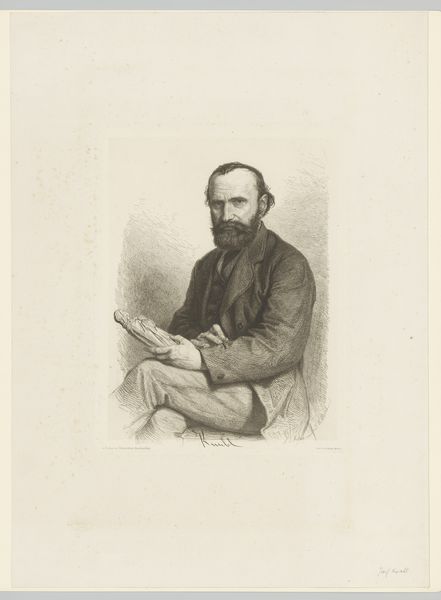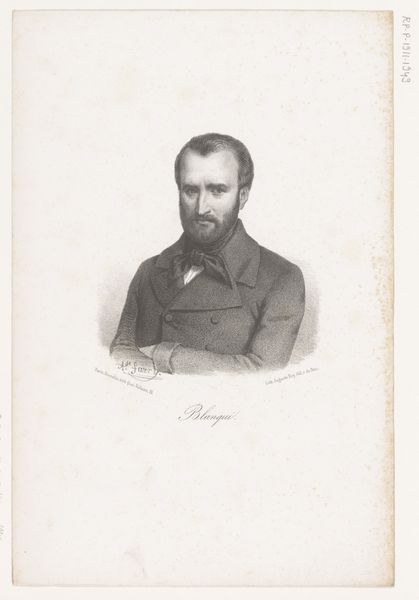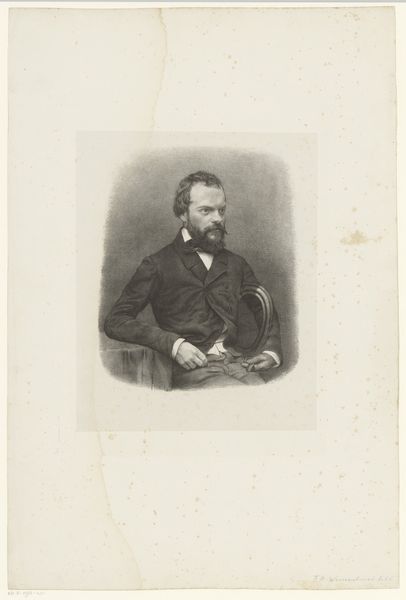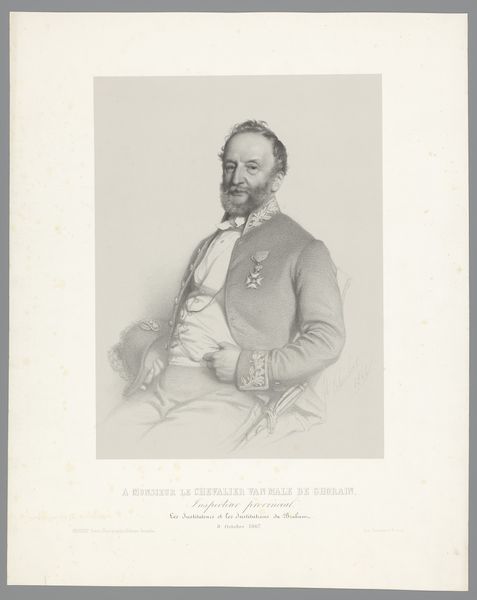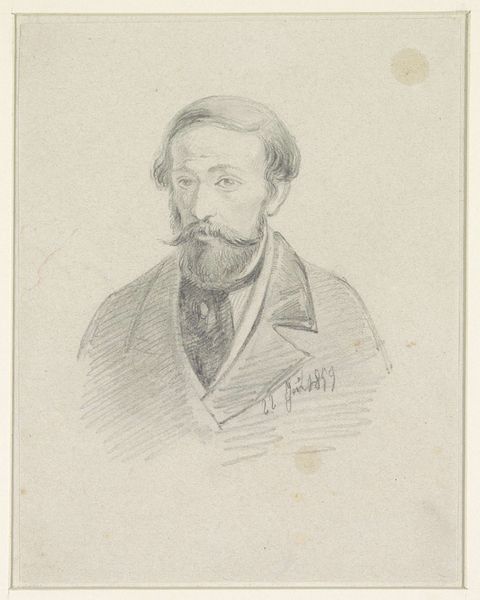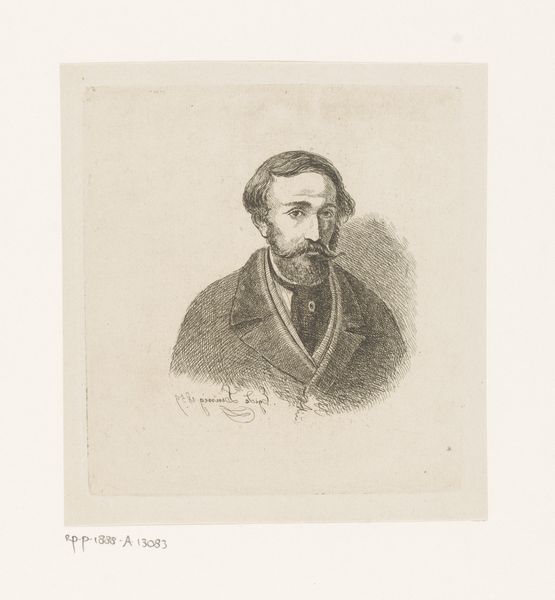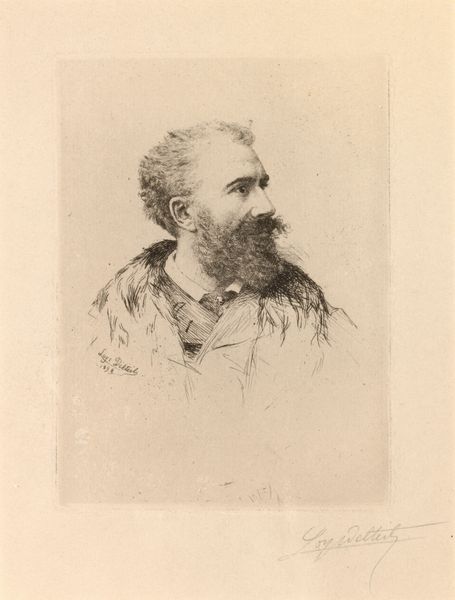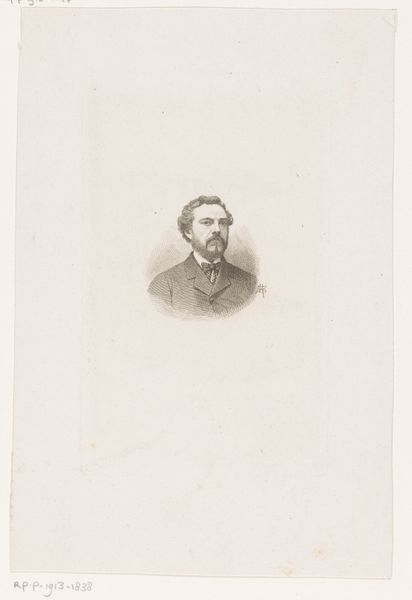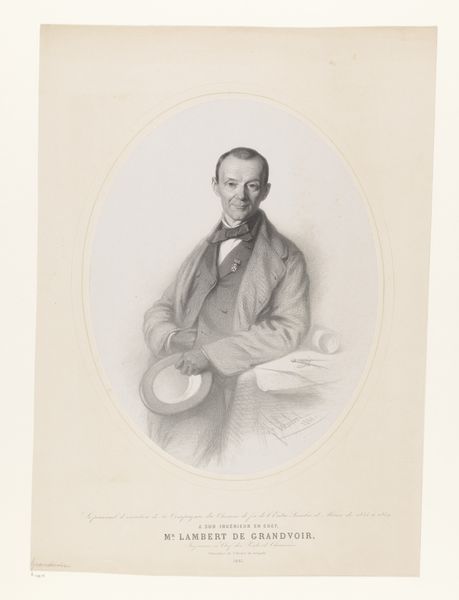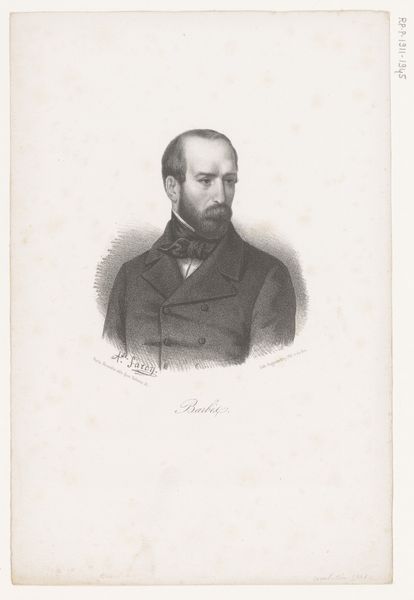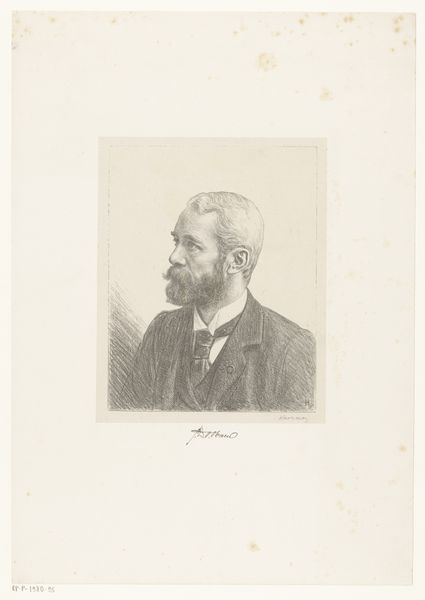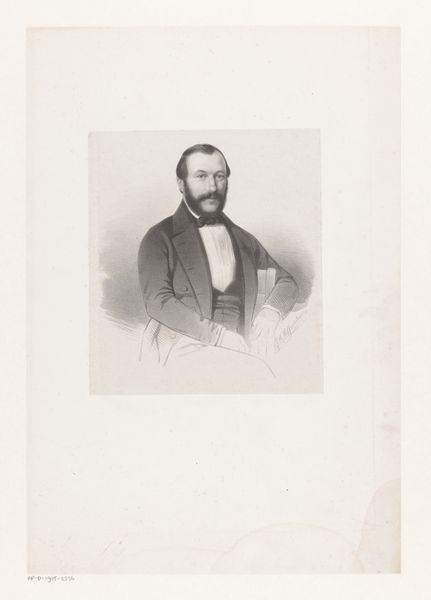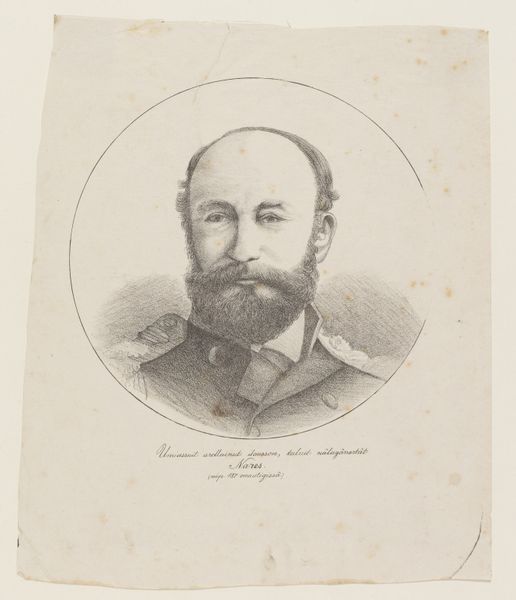
drawing, lithograph, print, paper
#
portrait
#
drawing
#
lithograph
# print
#
paper
#
romanticism
#
genre-painting
#
academic-art
Dimensions: 211 × 189 mm (image); 242.5 × 189 mm (chine); 355 × 272 mm (sheet)
Copyright: Public Domain
Curator: What a striking print! The play of light and shadow creates a remarkably intimate atmosphere. Editor: Indeed. We're looking at a lithograph by Paul Gavarni titled "Charles Chandellier," created in 1842. It’s currently held at The Art Institute of Chicago. It presents as both a Romantic portrait and a foray into genre painting. Curator: Lithography was truly transforming print culture then. It allowed for a much wider dissemination of images than previous methods, democratizing art, in a way. Notice the textures—the way the chalk captures the fabric of his jacket and the plushness of the chair. And the paper itself, its absorbency. Editor: Absolutely. This print is of particular interest when we think about the art world Gavarni inhabited. It was a world still shaped by academic traditions, but increasingly influenced by Romanticism’s embrace of emotion. Gavarni cleverly blends portraiture with a contemporary, almost casual setting. It seems a very "of the moment" image, of a figure within society, yet timeless. Curator: There’s a palpable tension between the careful craft of the print itself and the almost nonchalant pose of the sitter. His expression is ambiguous—a blend of weariness and perhaps contentment. I wonder what kind of labor produced that image. Who printed it? Who was buying these types of portraits, and why? It becomes less about "high art" and more about access and affordability. Editor: Right. These images, and their affordability, shaped public perception, contributing to the rising status of artists. The print's relatively small size also suggests its intimacy and availability to broader public. Think about the salons, the rising bourgeoisie, and the creation of art markets—Gavarni positions himself quite strategically. Curator: And the reproduction changed the whole relationship to the artwork! You're not buying "the original" here. You're buying access to a version, which, I think, profoundly altered ideas about authorship and value. Editor: Precisely. The print, therefore, stands as evidence of artistic and cultural shifts within the mid-19th century. It also makes us consider the evolution of celebrity through easily reproducible means. Curator: Reflecting on it now, Gavarni's print underscores the critical roles materials and broader societal access play within the sphere of art production. Editor: And it really emphasizes how artists of this time, in an increasingly democratized art world, successfully cultivated audiences using techniques that were becoming increasingly available and affordable.
Comments
No comments
Be the first to comment and join the conversation on the ultimate creative platform.
